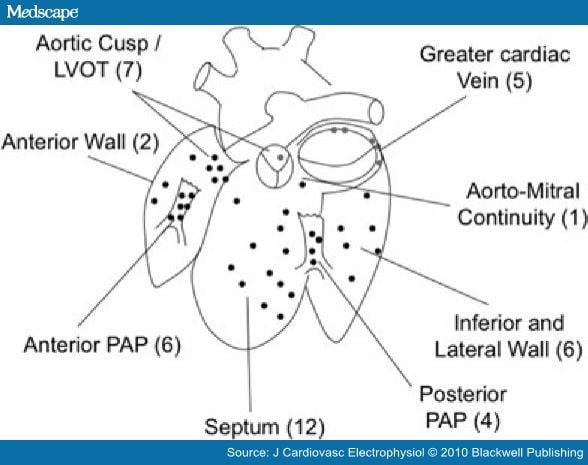
Outside the heart (epicardial ablation).This helps block the electrical signals that cause ventricular tachycardia. Heat or cold energy is applied to the target area, damaging the tissue and causing scarring. If the irregular heartbeat is coming from inside the heart, the health care provider will guide the catheter to this area. Sometimes, treatment is done at both locations. VT ablation may be done from inside or outside the heart. The health care provider will choose one of the following ablation techniques to create small scars in the heart and block irregular heart rhythms. The health care provider uses this information to determine the best place to apply the VT ablation treatment. Sensors on the tip of the catheter send electrical impulses and record the heart's electricity. The catheter is gently guided to the heart. The health care provider inserts a long flexible tube (catheter) into a blood vessel, usually in the groin area. In some cases, you'll receive anesthesia to place you in a sleep-like state.Ī care provider shaves any hair from an area, usually in the groin, and then numbs the area. Before the procedure, you'll likely receive a medication called a sedative that helps you relax.

Ventricular tachycardia ablation is done in the hospital. Heat or cold energy can be applied through the catheters and used to create tiny scars to block faulty electrical signals.
Left ventricle ablation flutter skin#
Catheters are typically inserted through the skin on the chest and into the space around the heart (pericardial space). During epicardial ablation, tiny scars are created on the outside of the heart to block faulty electrical signals that cause the heart to beat too fast. Epicardial ablation is a procedure to restore a regular heart rhythm.


 0 kommentar(er)
0 kommentar(er)
